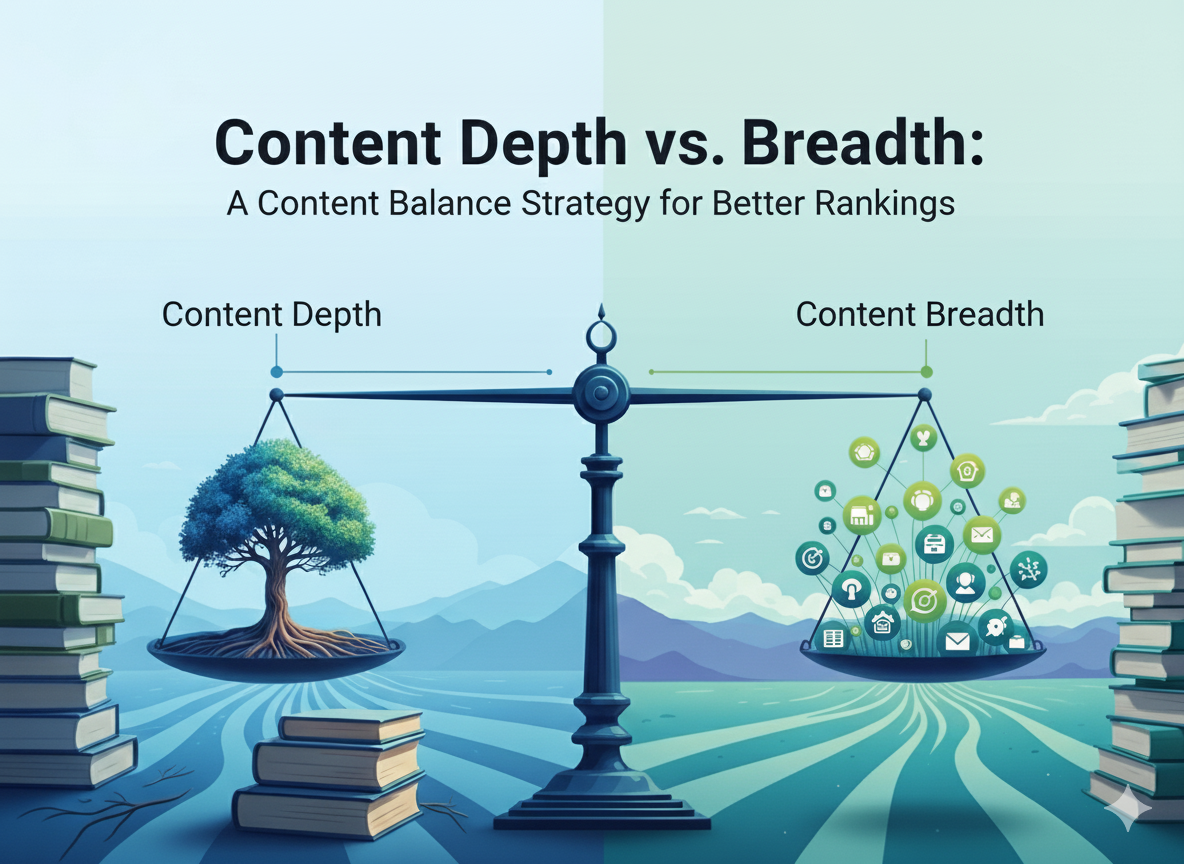By Janice Ramos

The Depth vs. Breadth Dilemma
Content Breadth: This approach involves covering a wide array of topics, often touching on many keywords and industry-related subjects. The goal is to cast a wide net, attracting diverse audiences and capturing traffic from numerous search queries. It’s about being present across many conversations.
Content Depth: On the other hand, content depth means thoroughly exploring a specific topic or keyword. This typically involves longer, more comprehensive articles, guides, or pillar pages that aim to become the definitive resource on that subject. The goal is to establish authority and expertise.
Many businesses fall into the trap of focusing too much on one over the other. An overreliance on breadth can lead to a shallow content library that lacks authority. Conversely, too much depth without enough breadth might mean you’re an expert on a few niches, but not capturing the wider audience interested in related topics. Neither extreme is ideal for improving Google rankings or generating qualified leads.
Crafting Your Content Balance Strategy
The most effective approach is to strategically combine both depth and breadth, creating a comprehensive content ecosystem that satisfies both search engines and your target audience.
1. Establish Pillar Content (Depth): Start by identifying your core service offerings and the main problems they solve. For each of these, create highly detailed, authoritative “pillar pages” or long-form guides. These pieces should aim to cover every facet of the topic, linking out to related articles. This is your foundation for demonstrating expertise and building topical authority in the eyes of Google. Think of these as your definitive resources that answer every possible question a potential client might have.
2. Develop Cluster Content (Breadth): Once your pillar content is in place, create numerous shorter blog posts and articles that delve into specific sub-topics related to your pillars. These “cluster content” pieces should link back to your main pillar page, reinforcing its authority. This broadens your reach, captures long-tail keywords, and provides a continuous flow of fresh content. This interconnected web of content tells Google that you are a comprehensive resource for your industry.
3. Implement a Smart Content Balance Strategy: Regularly audit your content to identify gaps in both depth and breadth. Are there important sub-topics related to your core services that you haven’t covered? Are your existing pillar pages comprehensive enough? This iterative process ensures your content strategy remains dynamic and responsive to both search trends and audience needs. A well-executed content balance strategy ensures that your SEO efforts are not just about traffic, but about attracting qualified traffic that converts into leads.
Stop Wasting Your Marketing Budget
If your SEO efforts aren’t delivering tangible leads or improving your competitive rankings, it’s time for a smarter approach. A robust content balance strategy ensures that every piece of content you create works harder, driving both authority and visibility. No more vague reports or unmeasurable results—just a clear path to better Google rankings and a predictable lead generation system.
Ready to build a data-driven SEO strategy that delivers real results? DoubleDome Digital Marketing specializes in helping businesses like yours scale efficiently with proven SEO strategies. We provide transparent reporting and measurable outcomes.








